Team RWW Meetings at SXSW 2011 and a Crisis of Confidence
During my trip to Austin in March 2011, I catch up with ReadWriteWeb writers Sarah Perez and Mike Melanson. Then when I get back home, I start thinking about big changes to our company.
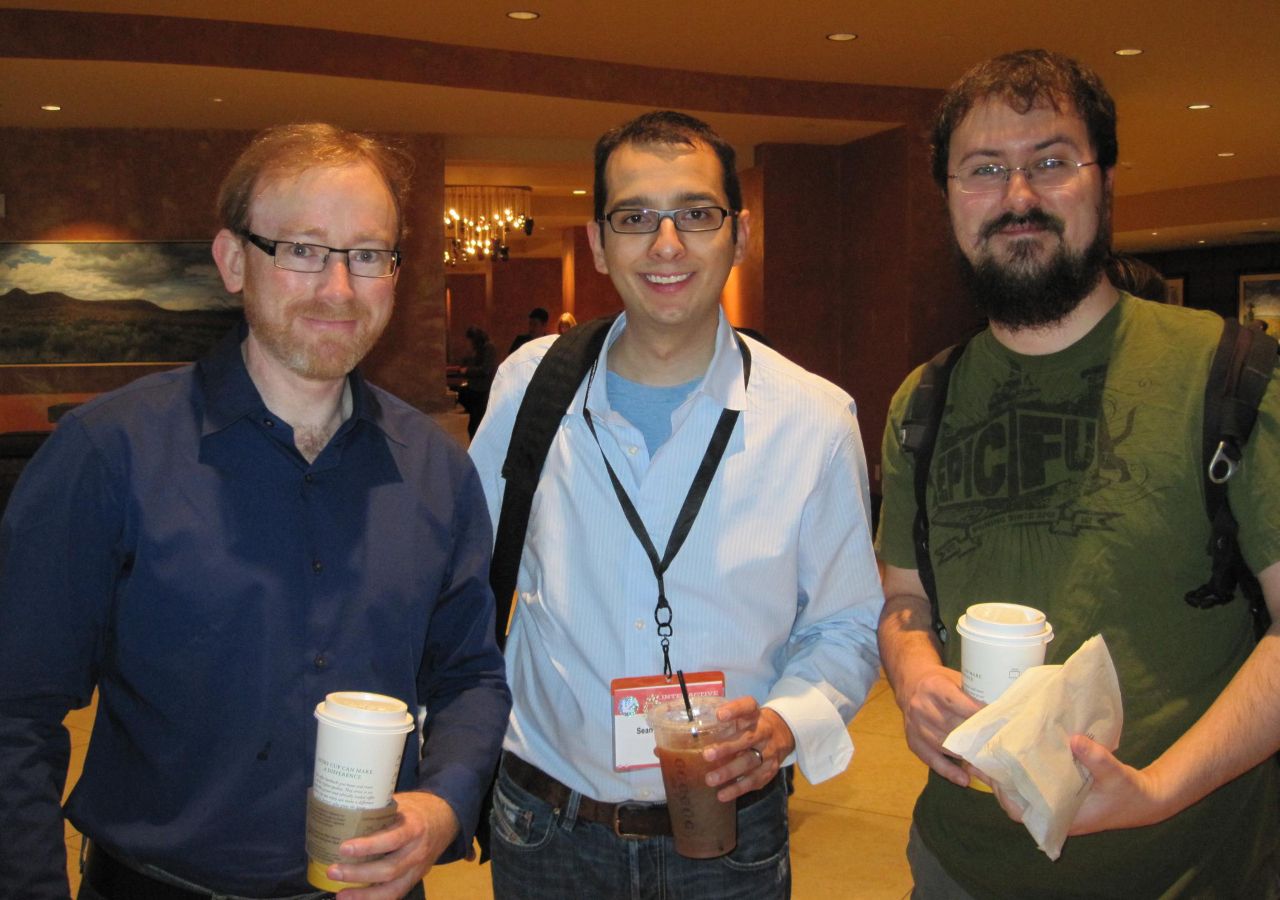
After the ReadWriteWeb management meetings and in-between the SXSW partying, I met up with Sarah Perez to talk about the editorial issues. She was pleased to hear that Abraham would be moving into a more hands-on role in the news team, and she seemed enthused by her proposed role helping me with the evergreen content plan. While she had some critiques of both Marshall and me, especially regarding story allocation and daily communication, she offered them in a constructive manner. Overall, she was positive and promised to lend her support to the editorial changes.
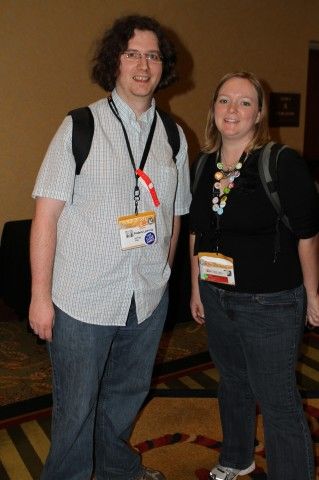
My meeting with Mike Melanson wasn’t quite so straightforward. We met up in the hallways of the main conference center on the afternoon of Tuesday, the day before I was to head out of Austin. In fact, it was my last scheduled meeting of the event. Mike was a talented writer and one of our best performers, but I’d also come to realize that he was an extremely sensitive character who often adopted a defensive posture in his online communications. He was a stocky guy with fair hair and a beard—and usually good-humored in person, in my limited experience seeing him. But on this afternoon, his face was red and he had a strange mix of anxiety and anger in his eyes. He clearly had something he wanted to tell me.
I asked him for his thoughts on our editorial systems and he immediately sounded off. He thought his story assignments from Marshall were inconsistent, and he questioned the content guidance the writers were being given by both Marshall and me. He seemed most perturbed, however, by the RSS system for covering news that Marshall had built. He complained that it felt like he was chained to his desk all day, watching RSS feeds roll by. He reminded me that he was currently living in San Francisco, the world’s leading tech city, so he should be out doing original reporting and making contacts.
I told Mike about the proposed editorial staff changes and that I’d take his other concerns on board. I assured him he was a valued member of our writing team and that I personally enjoyed his stories—for example, he’d introduced us all to Beluga, which had been a useful tool through that SXSW. I said I’d do my best to make RWW a happy home for him.
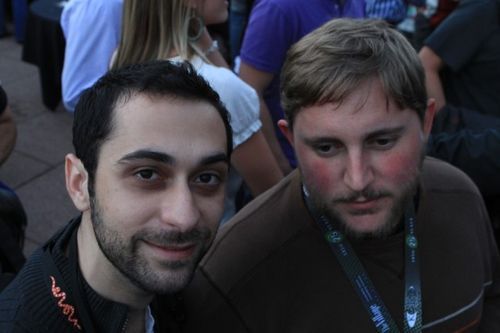
After the meeting with Mike, I began to feel increasingly anxious about the situation with the writers. I was insecure about our ability to keep people like Mike, Audrey, and Klint happy. Part of me felt they all complained too much, and perhaps were more trouble than they were worth. But given our structural challenges in hiring full-time writers, we just didn’t have the leverage of a TechCrunch or GigaOm in dealing with troublesome staff. So I had to try and keep them happy; I certainly didn’t want another Frederic situation.
I also recognized that if RWW was to continue growing, we would need more structure in the editorial operations. Abraham’s new role would help, but it was also on me to make sure our editorial strategy was consistent and clearly communicated.
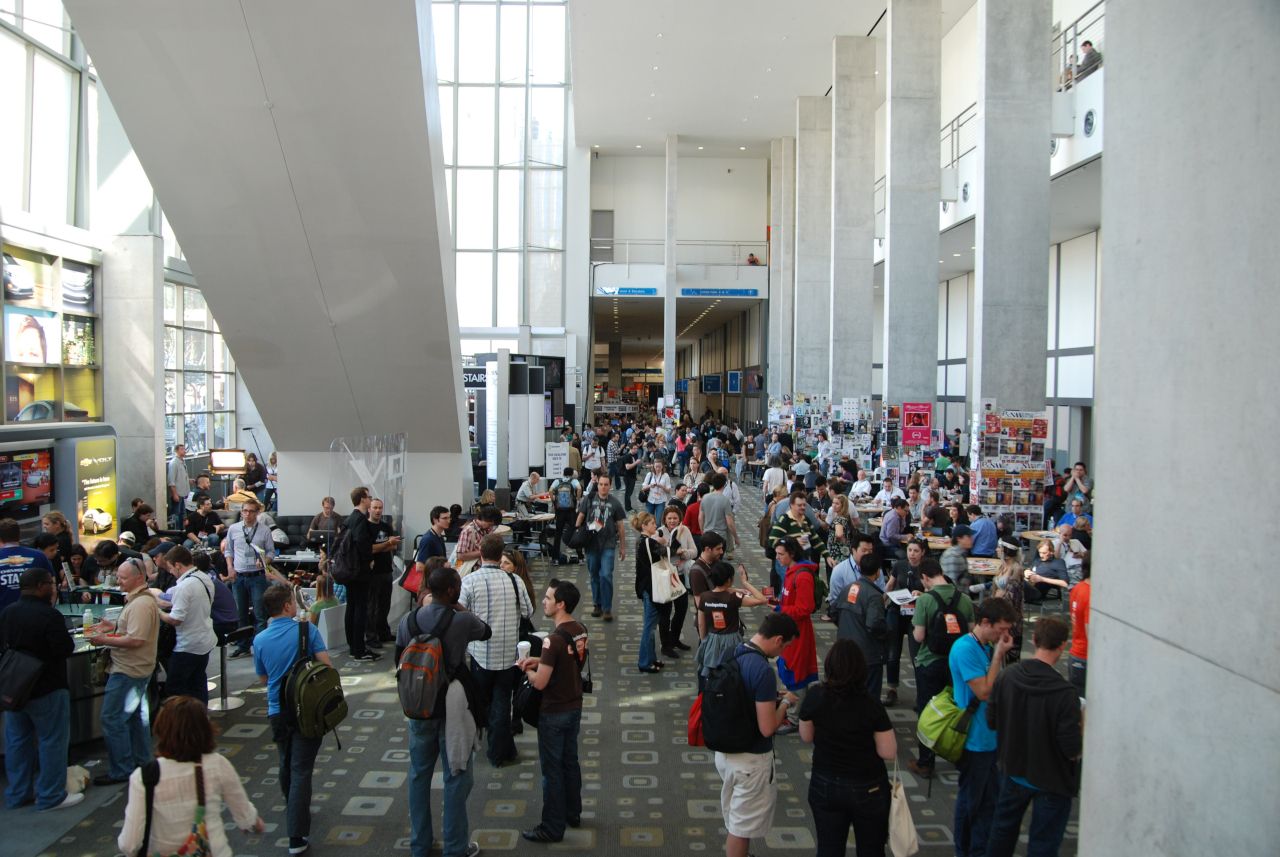
To take my mind off the pressures of the business, I attended a Foo Fighters concert at Stubb’s that evening. My Irish friend Lenny, who now worked for Automattic, had a couple of tickets and offered one to me. To everyone’s surprise, the band debuted a brand-new album, Wasting Light, which was scheduled for release in April. Although none of the crowd knew the songs, they were so immediately catchy and hard rocking that everyone soon had their hands in the air and heads bobbing. The Foos followed the new album with an hour of greatest hits, culminating in one of my personal favorites from their first album, “This Is a Call.”
The concert was just the tonic I needed to clear my head. For a moment I fancied that if I could lead a band of bloggers as effectively as the red-shirted Dave Grohl had just led his band, everything would work out fine. Hey, it was SXSW, it was okay to dream a little.

Rethinking My CEO Role
I’d missed my daughter and our new home in Petone, so at first I was grateful to be back in New Zealand. But I soon became overwhelmed again with work—and worse, I felt the depression I’d had in my youth starting to rear its ugly head again. My dating life was a contributing factor. Since the breakup with Elyssa the previous May, I’d met a bunch of women—mostly via online dating sites—but none of them had turned into a lasting relationship.
To try and kick myself back into gear, I resolved to start a clean slate with my social life. In the evenings I took long walks around the Petone foreshore to try and clear my head and find some peace within myself. I also began thinking about how to make more effective use of my work time.

Primarily, I was concerned that my dual role as CEO and coeditor meant that I wasn’t focused enough on the editorial side of the business. I had discussed this a bit in Austin with Sean and Marshall, but now that I was back home, I realized it was still bothering me. Among my main tech-blog competitors, all the founders had stepped away from one side of their company—editorial or business. Mike Arrington now listed himself as “Founder & Co-Editor” (he had a CEO, Heather Harde), Pete Cashmore was “Founder & CEO” (he had at least three people running the editorial side of Mashable), and Om Malik had a CEO (he didn’t even list himself as editor; he was simply “Founder and Senior Writer”). None of them were trying to straddle both sides of the business, as I was doing.
Sean had been RWW’s COO for sixteen months now. He was around thirty or thirty-one at the time, so still young—but perhaps not so much in our industry, when you had millennials like Mark Zuckerberg and Pete Cashmore running companies. Regardless of his age, Sean was much better at financial and business planning than I was. Perhaps that’s what RWW needed now, I reasoned: someone who was savvy with business strategy and execution to lead the company to the “exit” we all wanted. If Sean was CEO, I could focus on what I loved doing the most—leading editorial, writing, being a thought leader in our industry. I’d also be able to support Marshall more, to keep our editorial operations on track.
I had to admit, this was also a crisis of confidence on my part. I had enough of an ego to know that nobody else in our team could’ve created and grown a company like RWW—not Marshall, not Sean, and certainly not any of the writers who were complaining to me about how the company was currently being run! On the other hand, the problems we were having had shaken me. I was a lead-by-example type, but my writing and editorial involvement had necessarily dropped off due to my CEO duties. I needed to rectify that. Also, in order to scale the company, we would need more effective business management. That was a strength of Sean’s. I felt that his communication skills were better than mine too—if anyone could rally our team behind the company’s goals, it would be him. I decided to make the suggestion to Sean and see how he reacted. Since he was an ambitious guy, I didn’t imagine he’d object to having CEO in his job title.
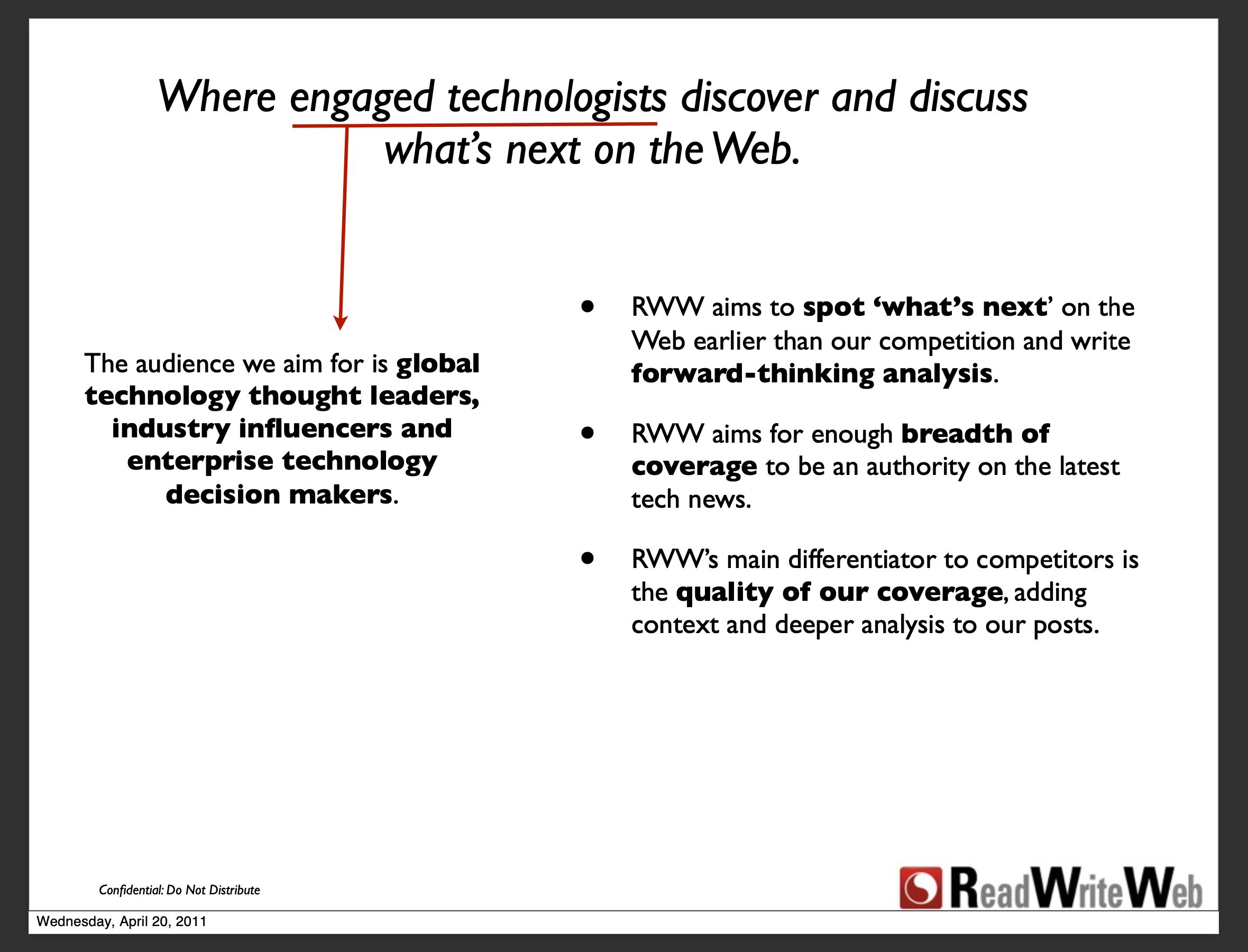
Sure enough, Sean was enthusiastic about the CEO transition plan. In one email, I concluded with this line: “I feel like RWW is at a turning point now—and the company needs its people focused on what they do best in order to get the best outcome.” It was a sentiment he thoroughly agreed with.
We quickly began drawing up a plan for the transition. We would need to beef up the sales and operations side of the company to take some of the load off Sean. Then it would be a matter of dividing up the leadership responsibilities. In a “First 100 Days Plan” document, we mapped out a plan of action. It included a visit to the West Coast by Sean during April. He would have a bunch of meetings in San Francisco, including with FM Publishing to tell them the news, and then visit Portland to hold an in-person company meeting (with me joining on Skype). Hopefully, by our next New York event in June, the new company structure would be well and truly bedded in.
In one of our emails in early April, Sean mentioned that we ought to check with our US lawyer, Camille Linson, about what might need adjusting in his contract. He pointed out that he would still technically be a contractor but would now be operating as a CEO contractor. I hadn’t considered that this might be an issue, but I told Sean to have a word with Camille about it.
Shortly after, Sean came back to me and said Camille’s initial reaction was that we couldn’t have a contractor with the title of CEO because it would likely cause tax issues. The problem was that the person running a company was pivotal in terms of assessing a company’s tax residence. Sean suggested I set up a call between Camille and Jeremy (my NZ lawyer). I did so, but I had a feeling where this would lead. I’d already had a lot of experience with lawyers and accountants from New Zealand and the United States talking among themselves, at great expense to me, and it never failed to end up in the same place: no action because of double taxation issues.
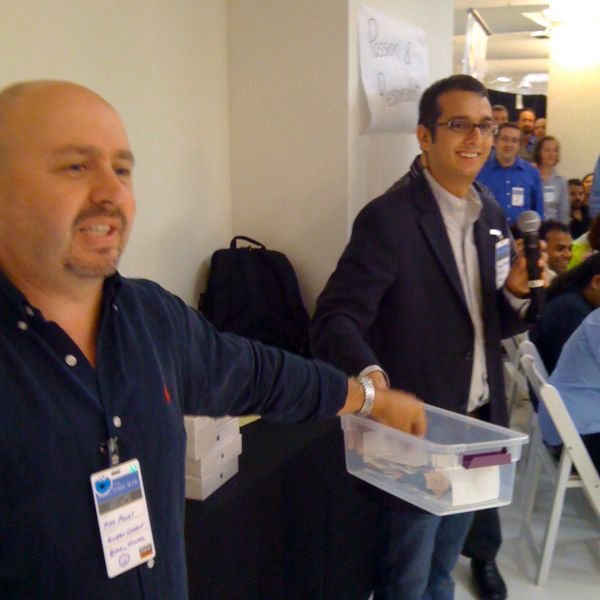
Sure enough, after nearly seven weeks of back-and-forth, the conclusion was the one I had expected all along: we couldn’t make the change because it was too risky from a legal and accounting perspective. Once again, international taxation laws had foiled our plans to put proper structure into the business.
Sean stoically accepted the situation, even though he’d been excited to take the reins of RWW. But I was exasperated. I felt like the company structure was hamstringing the business—not to mention my own career.
These constant company setbacks also seemed to mirror the situation with my long-running divorce settlement. I was effectively paying for two separate accounting firms—PWC for me, Deloitte for my ex-wife—to come up with a mutually agreed-on valuation for the company in order to settle on a divorce payout. But there were no signs of getting a satisfactory resolution there, either. To my growing frustration, our respective lawyers and accounting firms continued trading emails, squabbling over numbers, and trying to out-negotiate each other. It had now been over two years since we separated.
So I felt thoroughly stuck on both the company structure and the status of my personal life. But I didn’t have time to sit and stew about it. It was nearly time to hop on a plane to New York City for the next RWW event.
This post is part of my serialized book, Bubble Blog: From Outsider to Insider in Silicon Valley's Web 2.0 Revolution. View table of contents.
Next up: 059. The Great Editorial Pivot of 2011 As RWW Struggles Continue
Buy the Book
My Web 2.0 memoir, Bubble Blog: From Outsider to Insider in Silicon Valley's Web 2.0 Revolution, is now available to purchase:
- Paperback, US$19.99: Amazon; Bookshop.org
- eBook, US$9.99: Amazon Kindle Store; Apple Books; Google Play
Or search for "Bubble Blog MacManus" on your local online bookstore.